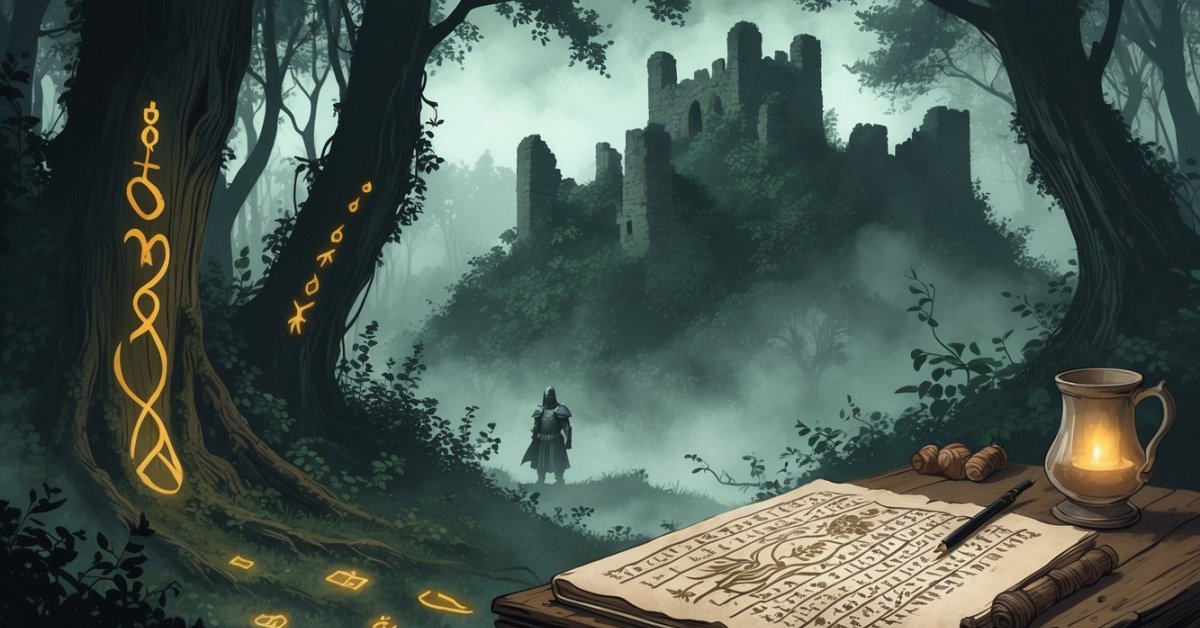Belarus is a country full of unexplained stories, ancient legends, and mysterious places. Some of the biggest historical mysteries in Belarus include giant boulders, forgotten castles, and age-old legends that still puzzle historians and locals alike.
These secrets show the country’s deep history and make Belarus interesting for anyone who loves a good mystery.
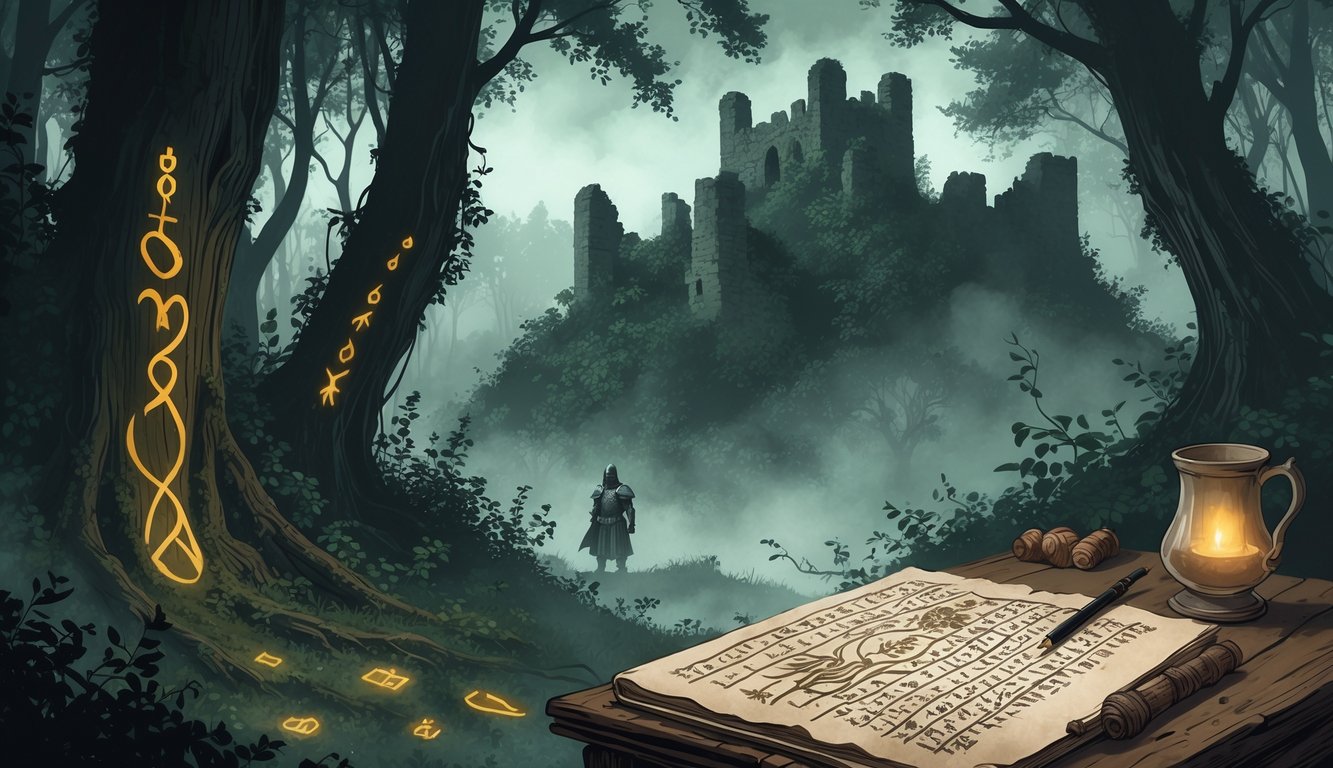
Visitors and locals can explore sites such as the massive boulders in the Vitebsk region. These boulders have sparked intriguing folklore and speculation about their origins.
Belarusian castles also hold many untold stories. Their walls whisper tales of hidden treasures and legends from centuries past.
Overview of Historical Mysteries in Belarus
Belarus has many historical mysteries tied to its ancient landmarks, old beliefs, and changing borders. These mysteries help connect the country’s past to its present.
Significance in Eastern European Context
Belarus stands at a crossroads in Eastern Europe. It borders Russia, Poland, Ukraine, Latvia, and Lithuania.
This position has put it at the center of historical events and invasions. Throughout history, borders have changed many times.
Stories and artifacts often have origins that are hard to trace. The country was once part of the Grand Duchy of Lithuania and the Polish-Lithuanian Commonwealth.
This history left Belarus with a mix of cultures and questions about national identity. Important sites, such as ancient castles and mysterious boulders like those near Gorki, draw visitors interested in their origins.
Some boulders are linked to legends. Others suggest ancient glacial movements, blending history and myth.
Influence on Belarusian Culture
Historical mysteries have shaped local traditions, art, and customs. Many tales passed down from generation to generation are rooted in real sites and unexplained events.
For example, folklore about mythical creatures is strong in rural areas and influences craftwork, music, and festivals. Ancient festivals and rituals reflect a mix of pagan beliefs and Christian customs.
These elements create a distinctive Belarusian identity. Local legends and old stories inspire Belarusian artists and writers.
They use these mysteries in paintings, literature, and theater. This keeps the stories alive and helps people understand their past.
Cultural Heritage and Legends
Belarus is known for its mysterious landmarks, ancient artifacts, and rich folklore. Massive stones, like the ones in the Vitebsk region, are the subject of local stories about giants and spirits.
These boulders appear in many legends and travel routes. They are popular tourist spots.
Historic castles and ruins, such as Mir Castle and Nesvizh Castle, are surrounded by unsolved mysteries and ghost stories. These sites attract visitors who enjoy uncovering secrets from the past.
Belarus also has old manuscripts and cryptic symbols found in churches and monasteries. These hints suggest possible links between Slavic traditions and earlier cultures.
The Enigma of Mir Castle
Mir Castle is one of Belarus’s most recognizable landmarks. Its Gothic towers and Renaissance features make it a symbol of the nation’s cultural identity.
Mysteries still surround its halls and underground passages.
Lost Treasures and Hidden Chambers
Stories about lost riches hidden within Mir Castle have captured people’s imagination for centuries. Some believe that nobles and warlords stored gold, jewels, and precious artifacts inside secret rooms.
Over the years, visitors have claimed to find unusual, sealed doors and brickwork that suggest the presence of hidden rooms.
Known Treasure Myths:
- Stashes of coins left behind by retreating armies
- Priceless family heirlooms from noble families
- Religious artifacts hidden during troubled times
Archaeologists and historians often debate whether these claims are true or just legends. Occasional discoveries of antique weapons and ornaments in the area show that the castle still holds secrets.
Despite restoration, some parts of Mir Castle remain locked or sealed. Its rumored treasures remain out of reach.
Legends of Ghosts and Secret Tunnels
Mir Castle’s history spans over four centuries. It has seen battles, sieges, and many owners.
Legends about ghosts haunting its corridors have grown over time. Local tales tell of shadowy figures wandering the halls late at night and strange noises from behind old stone walls.
Some visitors say they have seen unexplained mists or lights in certain towers. Another mystery is the rumored network of underground tunnels beneath the castle.
These secret passages supposedly connect Mir Castle to nearby towns or forests. Residents could escape during a siege.
Some hidden cellars and small tunnels have been found. The existence of a large tunnel system is still unconfirmed.
The mix of ghost stories and secret tunnels gives Mir Castle a mysterious reputation. Special night tours and history events let guests experience these tales.
UNESCO World Heritage Significance
In 2000, Mir Castle became a UNESCO World Heritage Site because of its unique blend of Gothic, Baroque, and Renaissance styles. Its importance goes beyond architecture.
The castle is a vital part of Belarus’s cultural heritage. It tells the story of how different cultures shaped the region.
Mir Castle appears on national currency and stamps. Restoration projects aim to protect original designs and make the site safe for visitors.
UNESCO status has helped increase global awareness. The castle remains an important destination for those interested in Europe’s past.
Polotsk: Ancient Mysteries and Myths
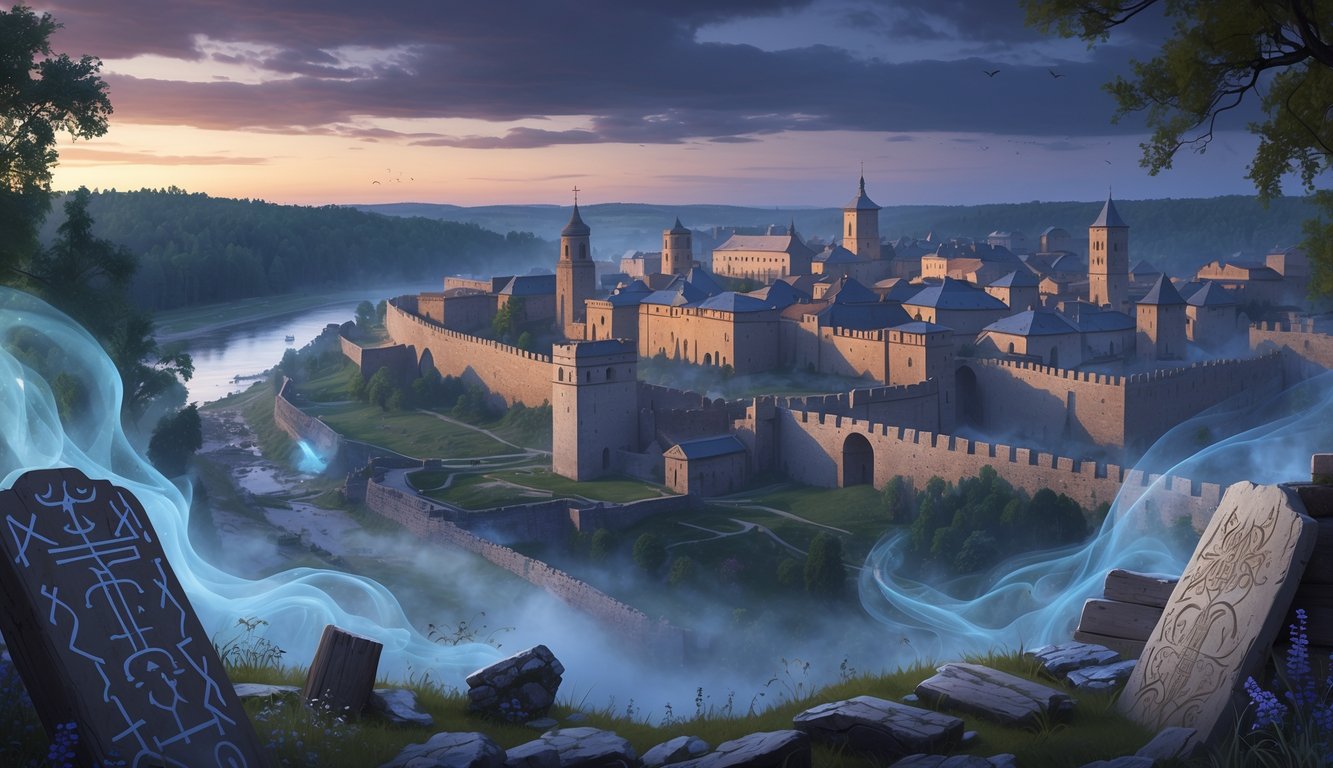
Polotsk is often called the oldest town in Belarus. It holds many secrets from its early days.
From ancient settlements and mysterious artefacts to unique legends, this place sparks curiosity.
Origins of Polotsk
Polotsk is one of the oldest cities in Eastern Europe. It first appeared in historical records in 862.
This makes it older than many other towns in the region. The exact reasons for its founding are still debated.
Some researchers think the location was chosen for its position along the Western Dvina River. This river route made trade and travel easy, which helped Polotsk grow.
Early settlers included Baltic and Slavic tribes. This added to the rich mix of cultures.
There are few written records from the time. Archaeologists rely mostly on ancient tools, pottery, and building remains.
These clues help piece together daily life in Polotsk during the early Middle Ages.
Unexplained Artefacts and Sites
During digs around Polotsk, archaeologists have found several strange artefacts. The most famous building is the Transfiguration Church, one of the oldest churches in Belarus.
It dates back to the 12th century. Its original frescoes have survived for nearly 900 years.
These paintings raise questions about their creators and the techniques used to preserve them. Some excavated items do not match the typical style of local Slavic culture.
For example, jewelry, tools, and religious items found in the area often show designs or languages from regions like Scandinavia or Byzantium. There are also ruins and underground passages beneath parts of the city that remain unexplored.
These hidden spaces add to Polotsk’s reputation as a city full of secrets.
Famous Legends of the Region
Belarusian folklore is rich with stories about Polotsk. One of the most well-known legends centers around St. Euphrosyne of Polotsk.
She was a famous nun who became a saint and is still honored today. Stories say she helped build churches, performed miracles, and protected the town from danger.
Other myths speak of underground tunnels beneath Polotsk. These tunnels are said to hide treasures or secret passages used by ancient rulers.
Families pass down these tales, and local tours sometimes feature them. Another local belief is that spirits from old forests and rivers guard the area around Polotsk.
People still share stories about magical events, enchanted amulets, and mysterious disappearances. Polotsk’s mix of history and myth makes it a unique part of Belarusian culture and folklore.
The Dyatlov Pass Incident: Belarusian Connections
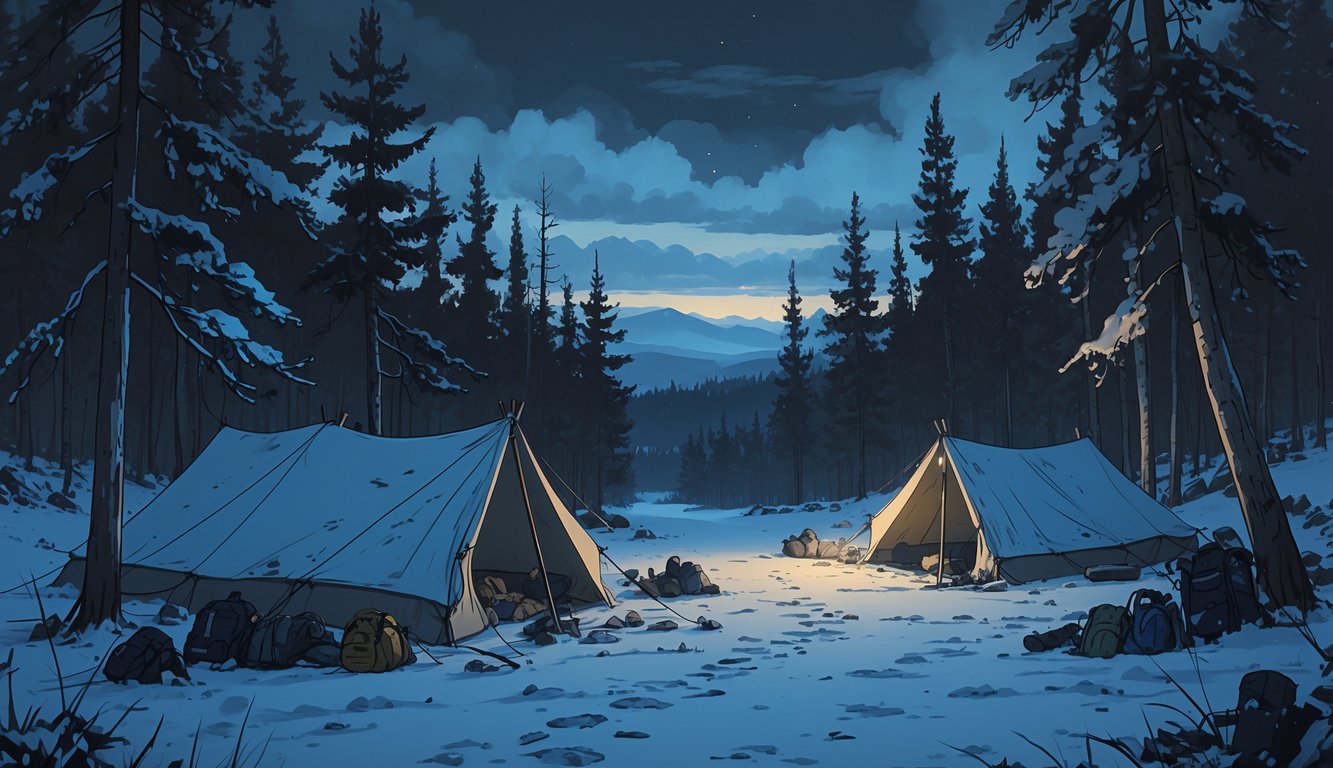
The Dyatlov Pass incident is often connected to Russia, but there are also interesting Belarusian links. The dramatic deaths of the hikers and theories with ties to Belarus make this story stand out in the region’s history.
The Tragic Story of the Hikers
In February 1959, nine experienced hikers set off on a trekking expedition in the Ural Mountains. Their leader, Igor Dyatlov, guided the group through deep snow and freezing winds.
All were students or recent graduates from the Ural Polytechnical Institute. The group never reached their destination.
A search party later found them. The hikers’ tent was torn open from the inside, and bodies lay scattered in the snow, far from their camp.
Some wore little clothing, some had severe internal wounds, and others showed signs of exposure. The mystery around their deaths remains unsolved decades later.
You can read more about the event’s background at the Dyatlov Pass incident.
Speculated Links to Belarus
Although the Dyatlov Pass is in Russia, several group members had family roots or connections to what is now Belarus. Records show that some participants had relatives living in cities like Minsk and Vitebsk.
Historians interested in Belarusian history often note these connections. During the Soviet era, students from Belarus and other regions often joined joint expeditions.
Some hikers spoke Belarusian or had Belarusian surnames. In the 1950s, education and travel programs created strong cultural links between the Ural region and Belarus.
This increased the chance of cross-regional friendships and expeditions.
| Hiker Name | Known Belarusian Connection |
|---|---|
| Zinaida Kolmogorova | Reported family in Belarus |
| Yuri Doroshenko | Possible relatives from Minsk |
| Lyudmila Dubinina | Belarusian ancestry debated |
Theories and Unresolved Questions
The unexplained details of the Dyatlov Pass incident have sparked many theories. Some believe harsh weather and panic led to the tragedy.
Others point to secret military testing in the Ural Mountains. There are rumors about KGB involvement linked to the group’s diverse backgrounds, including Belarusian connections.
Research into Belarusian archives has not revealed proof of an organized plot. Because some hikers had ties to Belarus, stories have spread about potential political motives or negative attention from Soviet authorities.
For further details, visit this account of the Dyatlov Pass Incident.
Mysteries of the Brest Fortress
The Brest Fortress in Belarus stands out not just for its tough defenses but also for its hidden stories. Its walls witnessed courage, confusion, and the birth of modern legends.
Heroism and Unanswered Questions
During World War II, Brest Fortress became a symbol of heroism and struggle as Soviet defenders held out against a surprise attack by German forces in 1941. Even though the odds were against them, many soldiers fought on for weeks, refusing to surrender.
Details about who survived and how many defended the fort still remain unclear. Historians debate the actual numbers, confused by lost records and mixed testimonies.
Some say a few scattered groups kept up resistance even after the main battle was over. Eyewitness accounts often differ, making it hard to know the full truth about what happened inside the walls.
Lost Defenders and Mysterious Figures
Many of the soldiers who fought at Brest Fortress vanished without trace. Stories circulate about unknown fighters whose names have never been recorded.
Some believe secret tunnels under the Brest Fortress offered escape routes, though no one can prove all the tales. Visitors and researchers have noted odd symbols and markings on the fortress walls.
Some believe these were left by unidentified defenders or were secret codes passed between trapped soldiers. The lack of clear records gives space for speculation about spies, infiltrators, or heroic acts that went unnoticed.
Every year, memorial events try to honor the missing and unknown. Yet the true fates of many individuals remain unsolved.
National Identity and Legend
The fortress has become more than a historic ruin; it is a key part of Belarusian national identity. After the war, the site was renamed the Brest-Hero Fortress to show gratitude for the defenders’ courage.
Over time, stories about the overwhelmed but brave defenders have grown into legend. Museum displays, guides, and memorials all help shape how people remember the past events.
Families still share tales of relatives who may have fought there, blending personal memory with official history. As new generations visit, the old fortress continues to spark questions about truth, myth, and what truly happened during those critical weeks.
Folklore and Unexplained Phenomena
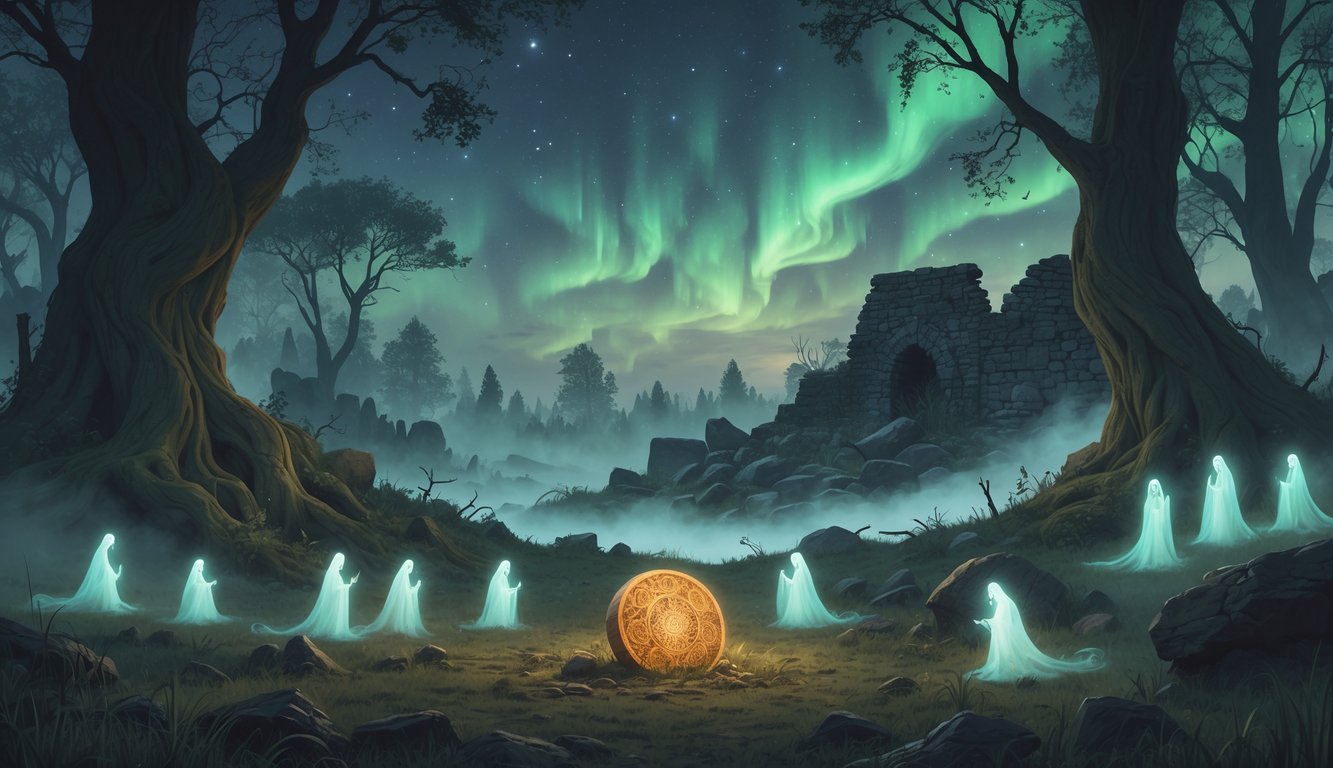
Belarus is known for its rich folklore, tales of mysterious creatures, and legends that blend with everyday life. Ancient beliefs, stories of supernatural beings, and rumors of ritual practices still spark curiosity across the country.
Supernatural Beings in Belarusian Folklore
Belarusian folklore is filled with stories about magical creatures and supernatural beings. The damavik is a house spirit that protects the home, but can cause mischief if not respected.
Another key figure is the leshiy, a forest spirit said to lead travelers astray or help them find their way, depending on how they behave in the woods. The rusalka, often described as a water nymph, appears in river and lake legends.
She is both beautiful and dangerous, sometimes blamed for drownings. These beings symbolize the mysteries of nature and are often featured during traditional festivals or told in bedtime stories.
Such tales continue to play an important role in Belarusian culture even today.
Rituals and Alleged Sacrifices
Traditional rituals have long been part of Belarusian village life, especially around important dates like Kupala Night. This celebration includes bonfire jumping, wreath floating, and singing, which are tied to beliefs about fertility and protection from evil.
Some historians suggest these ceremonies were once linked to ancient pagan sacrifices, although there is little direct proof. Archaeological finds, such as old burial mounds and uncovered animal bones, have led to speculation about sacrificial practices.
Written records from travelers mention rituals that now seem mysterious or strange to modern audiences. Despite limited evidence, these practices remain a popular topic for researchers and are a significant part of Belarusian folklore studies.
Modern Interpretations in Belarusian Culture
People in Belarus today continue to celebrate many old traditions, but the meaning behind them has often changed. Festivals and folklore events highlight stories about spirits and ancient rituals, but these are usually seen as cultural heritage rather than acts of real belief.
Schools teach about these stories to help preserve the nation’s identity. In literature and art, writers and artists draw on folklore themes to express Belarusian pride and history.
Television shows, plays, and even museums use these mysterious legends to attract visitors and generate discussion among the public. Belarusian culture uses its folklore not only to entertain, but also to connect the past with modern identity.
Unsolved Mysteries of Minsk
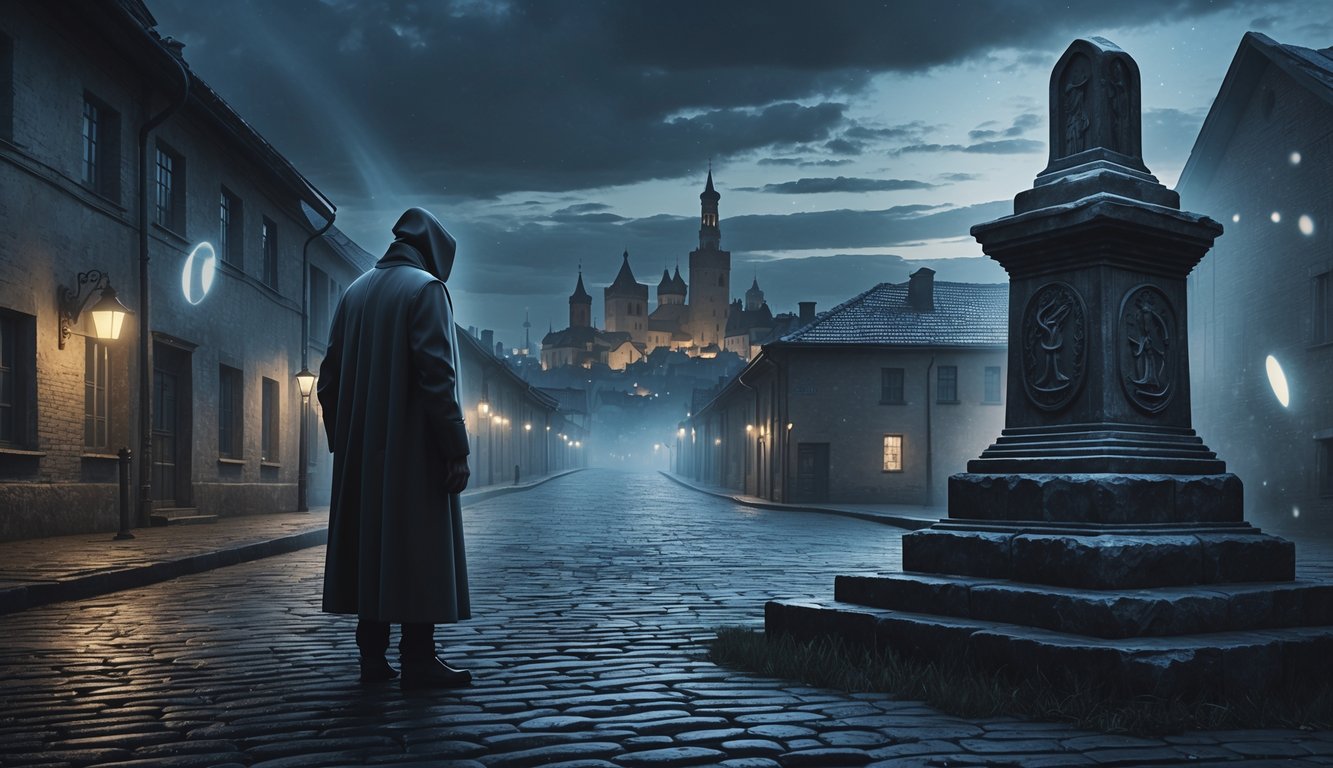
Minsk holds many secrets just below the surface. Its history is dotted with hidden places and objects that have quietly disappeared or remained unexplained.
Hidden Tunnels and Underground Secrets
Many people believe that a complex network of tunnels runs beneath Minsk. These tunnels are thought to date back to medieval times and were possibly used for escape during sieges or for transporting goods secretly.
Local legends say that some tunnels could still exist, stretching under famous landmarks like the Old Town and Independence Square. Historians and explorers have tried to map them, but most of the original entrances are blocked or lost.
A few old buildings have revealed bricked-up doorways and rooms below ground. Sometimes, during new construction, workers uncover strange passages that lead nowhere.
These discoveries inspire questions about what else lies beneath the busy city streets. Secrets below the city have become part of Minsk’s culture and are even mentioned on certain tours focused on urban legends.
While some tunnels may have collapsed or been filled in, the mystery continues to interest both residents and visitors.
Disappearing Monuments
Minsk’s population has witnessed the sudden disappearance of several monuments over the last century. The reasons are often unclear, tied to political shifts or changes in city planning.
For example, statues from the Soviet era, including some dedicated to lesser-known local heroes, vanished almost overnight. Sometimes, citizens noticed empty pedestals where famous busts or plaques once stood.
This has sparked rumors and stories about secret removals during the night. City records do not always explain where the monuments went or why they were taken away.
A list of missing monuments is sometimes shared in local museums. These changes have become a symbol of how the city’s history, culture, and memory can change with its rulers and events.
For more details about these hidden stories, visit 10 Hidden Historical Sites in Minsk at secretattractions.com.
The Secrets of National Library of Belarus
The National Library of Belarus is known for its unusual diamond-like shape and its important role in shaping Belarusian cultural identity. Its vast collection and unusual stories about its history have sparked curiosity and wonder for many years.
Lost Manuscripts and Hidden Collections
Some believe the library holds rare manuscripts and books that disappeared during wars and political upheavals. Rumors spread about private rooms and vaults where these lost writings are kept away from the public.
Historians say that during World War II, many Belarusian texts went missing. Some claim these works found a secret home in the depths of the library’s archives.
While the library officially houses the largest book collection in Belarus, the true contents of its hidden sections are not fully known. The library has become a symbol of knowledge and mystery in Minsk.
Its collection includes old maps, religious texts, and rare literature that capture Belarus’s rich history. People visiting the National Library of Belarus hope to glimpse these secret documents, though many remain locked away.
Stories of a Mysterious Figure
There are stories about a mysterious figure who was often seen during the building’s construction in the early 2000s. Workers described a man in old-fashioned clothes moving through the site at night.
Some thought he might have been a caretaker, while others believed he was connected to the fate of the lost manuscripts. His identity was never confirmed, leading to many theories among employees and locals.
This mysterious figure is often said to have guided visitors to special parts of the building or whispered warnings about disturbing certain collections. Over time, he has become a local legend, deeply tied to the library’s air of secrecy and Belarus’s cultural identity.
Even today, some staff claim to see fleeting shadows after closing hours, keeping the legend alive.
Vitebsk and Zaslavl: Enigmatic Cities
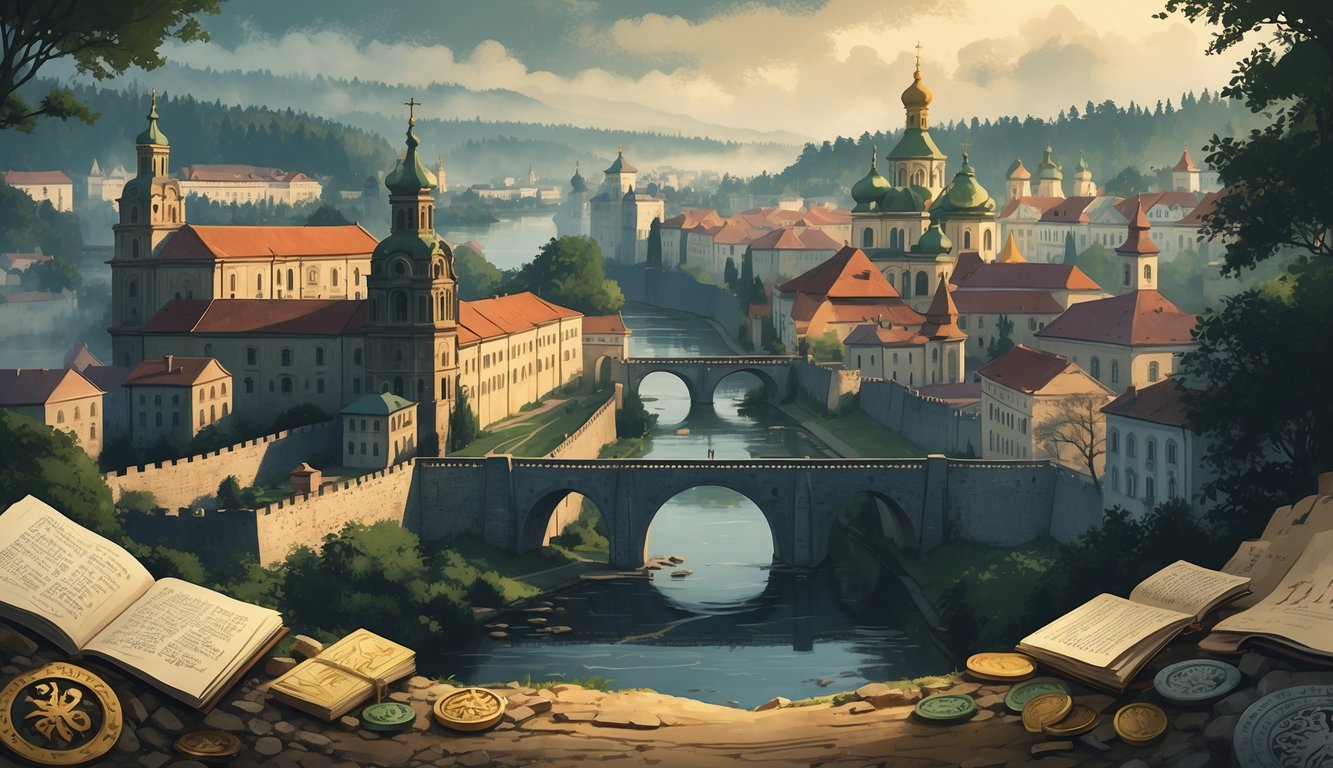
Vitebsk and Zaslavl both hold unique places in Belarusian history. While their ancient streets draw tourists, stories and mysteries continue to shape the cities’ identities.
Unexplained Urban Legends
Zaslavl’s history is full of dramatic tales. One legend speaks of its founding, linked to Prince Vladimir, Rogneda, and their son Izyaslav.
According to the story, after a tragic family conflict, Rogneda and young Izyaslav were sent into exile here. The town’s name is said to come from Izyaslav himself.
Over the centuries, Zaslavl has been destroyed and rebuilt many times. People tell stories about underground tunnels beneath old churches and rumors of treasure hidden during wars.
These tales persist, feeding curiosity today. In Vitebsk, legends swirl around its ancient streets and winding river.
Some local stories mention ghostly sightings and strange events near the oldest sites. Despite its modern look, Vitebsk’s past is always close by, with many unexplained events becoming part of city lore.
Cultural Oddities and Mysteries
Vitebsk is known for its rich artistic past, including being the birthplace of Marc Chagall. Strange and rare art forms have appeared here since the early 1900s.
During Soviet times, many churches and historic sites disappeared, only to be rebuilt after Belarus’s independence. Some buildings still hold secrets about their true original purpose or lost artifacts from before World War II.
In Zaslavl, visitors notice symbols and objects from several eras, including ancient fortresses, stone crosses, and church frescos. Sometimes the origin of these objects is not clear, which adds to the enigma of the town’s past.
The blend of pagan and Christian marks makes Zaslavl’s culture and festivals unlike any other Belarusian city. For deeper insight into their cultural significance and legends, Vitebsk’s artistic heritage is detailed on this Vitebsk city guide, and Zaslavl’s historical roots are covered in this overview of ancient Belarusian cities.
Impact of Mysteries on Belarusian Identity
Historic mysteries and legends have shaped how the people of Belarus view themselves. These stories touch daily life, culture, and the sense of national pride, especially in times of change.
Influence on Modern Culture
Belarusian culture is rich with legends, such as the tales surrounding Mir Castle and ancient hill forts. These sites host yearly festivals and art shows.
School trips often visit these places, making the mysteries a living part of how people celebrate their heritage. Listeners of folk music and readers of local literature often find references to storied mysteries from the past.
For many, these legends create a shared experience. Pictures, songs, and dances based on famous legends fill public spaces and television.
Teachers use these topics in history classes to keep the subject exciting and meaningful. The ongoing interest in historic mysteries helps young people learn about their roots in an engaging way.
Cultural projects, like museum exhibitions and digital storytelling, showcase the influence of these mysteries. They allow both locals and tourists to connect with Belarusian identity through creative expression.
Role in the Republic of Belarus’ Independence
Belarus faced many hardships on its path to becoming an independent republic. Historic sites linked to famous legends, like the Brest Hero-Fortress, have become symbols of resilience and unity.
These places keep memories of struggle alive. They represent the nation’s strength during difficult times.
People see efforts to preserve and honor these mysteries as acts of national pride. The stories help people respect the sacrifices made by their ancestors and inspire them to protect their freedom.
After independence, schools and public places focused more on Belarusian history and legends. This encouraged people to speak the Belarusian language and feel their unique identity.
Historians and educators talked about legendary events and figures when discussing what it means to be part of the Republic of Belarus. These mysteries became part of the national story, connecting the past with hope for the country’s future.
To learn more, see how national identity and historic narratives have been debated in Belarus.

